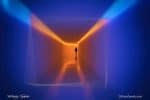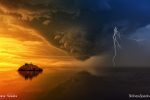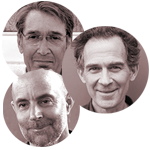Holotropic experiences have the potential to help us discover our true identity and our cosmic status. ~ Stan Grof
We are pleased to introduce this five-part series on Stanislav Grof’s lecture, The Consciousness Revolution: New Perspectives in Psychiatry, Psychology, and Psychotherapy given at the XVII International Transpersonal Conference in Moscow on June 24, 2010. Click here for a free PDF transcript download of Grof’s lecture. All text in this post is taken directly from the transcript and is in italics.
Visit Stan Grof’s Teacher Page for more information about Stan and his extensive research into the healing and transformative potential of non-ordinary states of consciousness. He has had significant influence on the integration of science and transpersonal psychology.
In The Consciousness Revolution, Stan Grof presents radical views about consciousness, psychotherapy and the human psyche, focusing on his exploration into non-ordinary states of awareness. He refers to non-ordinary or altered states of consciousness as holotropic. This composite word means literally “oriented toward wholeness” or “moving toward wholeness.”
Holotropic experiences have the potential to help us discover our true identity and our cosmic status.
The first post in the series, New Perspectives, introduces Stan and his pioneering work with holotropic states which began in the 1950s with LSD research and later with holotropic breathwork, a therapy created by Grof and his wife Christina.
Grof recommends radical revisions in our understanding of consciousness and the human psyche in health and disease. The areas that require major shifts in our thinking make up the substance of his lecture. Each post in our Consciousness Revolution series overviews one or more of these areas that Grof believes require radical revision.
The Nature of Consciousness and Its Relationship to Matter
In this post Grof explores the nature of consciousness and its relationship to matter, overturning the conventionally accepted materialist attitude which accepts the “thesis” that consciousness arises from the material.
…consciousness is an epiphenomenon of material processes; it allegedly emerges out of the complexity of the neurophysiological processes in the brain. This thesis is presented with great authority as an obvious fact that has been proven beyond any reasonable doubt.
Grof presents evidence suggesting that consciousness can, under certain circumstances, operate independently of its material substrate and can perform functions that reach far beyond the capacities of the brain.
Mainstream science has been able to maintain its present position only by ignoring, misinterpreting, and even ridiculing a vast body of observations indicating that consciousness can exist and function independently of the body and of the physical senses.
In this next post from our series, Grof expands the accepted map of the human psyche by adding two domains of consciousness: the perinatal and the transpersonal.
The first of these domains can be referred to as perinatal, because of its close connection with the trauma of biological birth. This region of the unconscious contains the memories of what the fetus experienced in the consecutive stages of the birth process, including all the emotions and physical sensations involved.
The transpersonal, Grof’s second new psychic domain, offers significant yet controversial insights into the psyche.
…it includes a rich array of experiences in which consciousness transcends the boundaries of the body/ego and the usual limitations of linear time and three-dimensional space…This region harbors mythological figures, themes, and realms of all the cultures and ages, even those of which we have no intellectual knowledge.
After expanding our understanding of the psyche, Grof turns to new methods for working with emotional and psychosomatic disorders (such as holotropic breathwork) which expose deeply buried psychic roots and offer better treatments for trauma.
Various avenues of work with holotropic states, such as psychedelic therapy, Holotropic Breathwork, or psychotherapy with people experiencing spontaneous psychospiritual crises, have shown that emotional and psychosomatic problems cannot be adequately explained as resulting exclusively from postnatal psychotraumatic events.
Psychotherapy using holotropic states of consciousness offers many additional highly effective mechanisms of healing and personality transformation, which become available when experiential regression reaches the perinatal and transpersonal levels. Among these are actual reliving of traumatic memories from infancy, childhood, biological birth, and prenatal life, past life memories, emergence of archetypal material, experiences of cosmic unity, and others.
In this post, Grof turns to strategies used by psychotherapists. He seems to believe that, although many methods and strategies within psychotherapy exist, the most effective are those that mediate contact between the conscious ego and spiritual consciousness. Holotropic techniques activate unconscious material, and bring into consciousness long-buried sensations, memories, or even pre-memories with strong emotional charge.
The therapist’s task is to allow this process to unfold without interference….They simply support whatever is spontaneously emerging and manifesting from moment to moment, trusting that the process is guided by intelligence that surpasses the intellectual understanding.
What a psychotherapist can do, according to C.G. Jung, is to create a supportive environment, in which psychospiritual transformation can occur; this container can be compared to the hermetic vessel that makes alchemical processes possible… that mediates contact between the conscious ego and a higher aspect of the client.
The Role of Spirituality in Human Life
In this post of our series, Grof bridges the divide between science and spirituality.
The leading philosophy of Western science has been monistic materialism. Various scientific disciplines have described the history of the universe as history of developing matter and accept as real only what can be measured and weighed. Life, consciousness, and intelligence are seen as more or less accidental side-products of material processes.
Research with holotropic states has changed some of this conventional thinking.
…in these states it is possible to encounter a rich array of experiences which are very similar to those that inspired the great religions of the world – visions of God and various divine and demonic beings, encounters with discarnate entities, episodes of psycho-spiritual death and rebirth, visits to Heaven and Hell, past life experiences, and many others.
Be sure to read The Consciousness Revolution: New Perspectives in Psychiatry, Psychology, and Psychotherapy given at the XVII International Transpersonal Conference in Moscow in 2010. Click here for a free PDF transcript download of Grof’s lecture.











